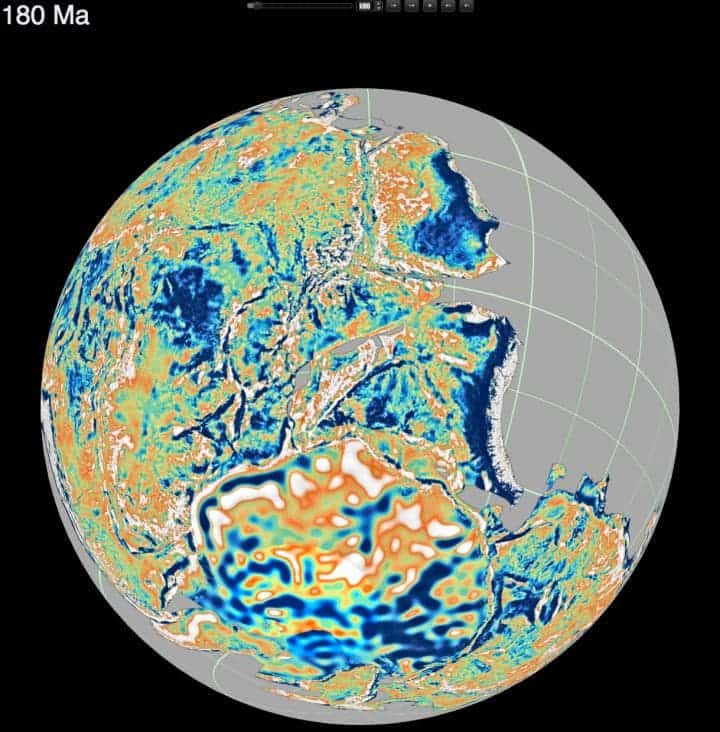How did South America slot next to Africa? Where was my country a billion years ago? Thanks to a cloud-based virtual globe developed by University of Sydney geologists, anyone with access to internet can now find out the answer to those questions and many others.

[The interactive globes can be viewed on any browser at: portal.gplates.org]
Reported today in PLOS ONE, the globes have been gradually made available since September 2014. Some show the Earth as it is today, while others draw from geological reconstructions to depict how it was like millions, hundreds of millions, and even a billion years ago. To my knowledge, this is the first and only interactive portal which allows this. You can see the supercontinents moving around, putting a pleasant image on tricky concepts from tectonics.
“Concepts like continental drift, first hypothesised by Alfred Wegener more than a century ago, are now easily accessible to students and researchers around the world,” said University of Sydney Professor of Geophysics Dietmar Müller.
“The portal is being used in high schools to visualise features of the Earth and explain how it has evolved through time.”
The portal doesn’t only highlight the planet’s geology and continental or tectonic plates’ positions. You can also visualize seabed geology, a global digital elevation model as well as the global gravity and magnetic field. Visualizing the plates moving towards/away from each other and reacting to the huge pressure is enthralling.
“When continents move over hot, buoyant swells of the mantle they bob up occasionally causing mountains,” said Professor Müller. “Conversely the Earth’s surface gets drawn down when approaching sinking huge masses of old, cold tectonic slabs sinking in the mantle, creating lowlands and depressions in the earth’s crust.”
The project has been highly successful and as mentioned above, is already being used in an educational context in several highschools. However, open-access big data offers everyone and anyone the possibility to take advantage of centuries of research.
“These cloud-based globes offer many future opportunities for providing on-the-fly big data analytics, transforming the way big data can be visualised and analysed by end users,” said Professor Müller.
The seafloor geology globe is the most popular one, viewed on average 500 times per day.


